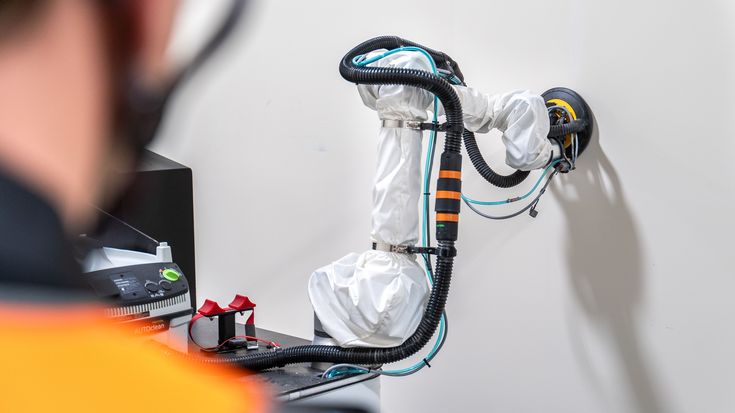The robotics industry is on the brink of transformative change. Over the past two years, artificial intelligence (AI) has reshaped our perception of what technology can achieve, evolving from a buzzword to an essential part of how companies will operate in the years to come. In 2025, the emphasis will shift from innovation to real-world applications that are set to redefine industries globally.
In the realm of robotics, AI is expanding what’s possible. Once confined to repetitive tasks in controlled environments, robots now have the ability to understand and autonomously perform complex tasks in ways not seen before. This evolution is transforming how various sectors operate, and is quickly redefining the future of work.
Leading this charge is Anders Billesø Beck, Vice President of Technology at Universal Robots. With a focus on making automation accessible and impactful, Anders has deep expertise and a passion for using robotics to enhance human work, making him a key voice on the future of automation.
Here are his five predictions for robotics in 2025:
1: AI’s coming of age
2025 will be a pivotal year for AI, marking its transition from hype to practical implementation. Over the past few years, AI startups have emerged at a rapid pace, but this year, we’ll see some consolidation and integration. Yes, there’ll still be plenty of exciting new entrants but also more refined, mature solutions.
AI will also become more normalized. It will no longer be seen as a standalone technology, but instead as an embedded feature, enhancing existing systems. During AI’s earlier “hype years”, solutions were often explicitly branded as AI-driven or as an AI solution. Now, and even more so in the coming year, we will see AI take on the role of a quiet enabler – a powerful tool supercharging and enhancing functionality subtly in the background. Take, for example, Ocado’s cobot solution. It’s not marketed an “AI solution” But as a logistics pick-and-place system that happens to use AI.
The next wave of AI is physical too. AI that understands the laws of physics, can adapt to unforeseen challenges, and navigate dynamic, real-world environments. We’ve seen this in 2024 already, but the wave will grow much bigger in 2025. By embedding physical AI into robotics, we will open the door to systems that go beyond simply processing data, instead looking to interact meaningfully with the physical world, reshaping industries, and paving the way for my second prediction.
2: Robot baristas and chefs
For decades, robots were confined to industrial settings, but we’re now starting to see them move out into open society. While humanoid robots might be the best-known example – despite being some way from commercial viability – collaborative robots, or cobots, are making their mark across industries. Take film and TV production, for example. By the end of the year, there’s a good chance you’ll have watched a movie, TV show, or commercial where cobots controlled the camera. A great example of this is MRMC, who produces cobot-based camera solutions.
In the food and beverage industry, cobots are also starting to shine, particularly in the US and Asia. By the end of 2024, you may find yourself enjoying a coffee or a meal where a robot has assisted with the preparation. Cobots designed for hygienic food preparation can maintain consistency and speed during peak periods for businesses. US fast-food chain Chipotle are among those paving the way, already using cobots in their restaurants. And just like we see across other industries, cobots are not replacing workers, but are rather improving both productivity and the working environment.
Beyond kitchens and film productions, cobots will also begin appearing in industries like construction more frequently. Companies like Canvas are already using cobots for tasks such as drywall finishing, highlighting how these versatile machines can address skill shortages in industries with high variability. Another example is Raise Robotics, who uses cobots to, among other things, install fasteners for façade panels on high-rise buildings – a both dangerous and repetitive task.
3: India’s automation surge
Traditionally, we’re used to seeing Asian powerhouses like China, Japan and South Korea dominate the global robot market. But, the next 12 months will bring significant shifts in global market dynamics for robotics, with India set to play a leading role. The country is investing heavily in automation, supported by proactive government initiatives. The Production Linked Incentive (PLI) scheme for example, provides subsidies to companies building production capacity in India across key industries such as automotive, metal, pharmaceuticals, and food processing.
India’s automation potential is further boosted by three powerful forces driving world-leading production techniques. Firstly, India boasts a young population, with a median age of 29 compared to Germany’s 45, offering a dynamic and adaptable workforce. Secondly, the country’s thriving technology industry, valued at $115 billion in IT and business process management, provides a strong foundation for innovation. And lastly, strategic government investments in digitization, industrial automation, and skills development are creating an environment ripe for growth.
These efforts combined with the "Make in India" initiative, highlight the nation’s enormous potential. In just one year, India has risen from 10th to 7th place globally in robot installations – a huge 59% increase. This rapid growth underscores India’s emergence as a critical hub for automation and innovation, driven by strategic policies and robust economic momentum.

